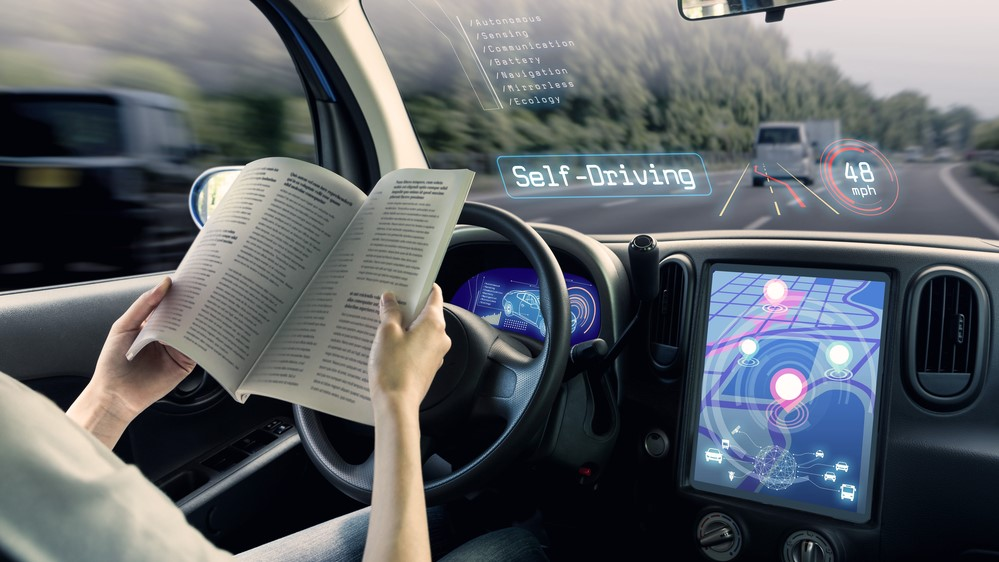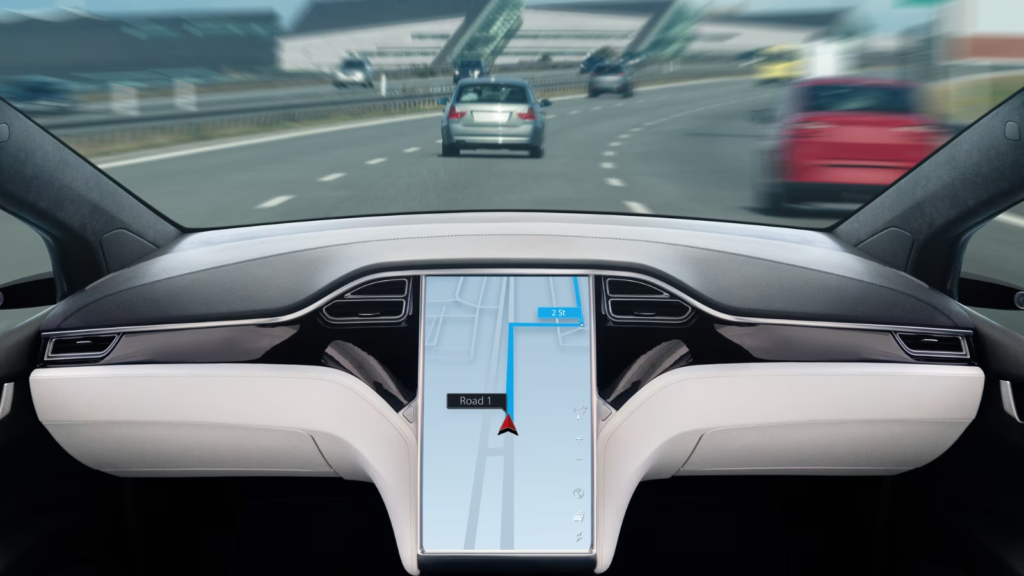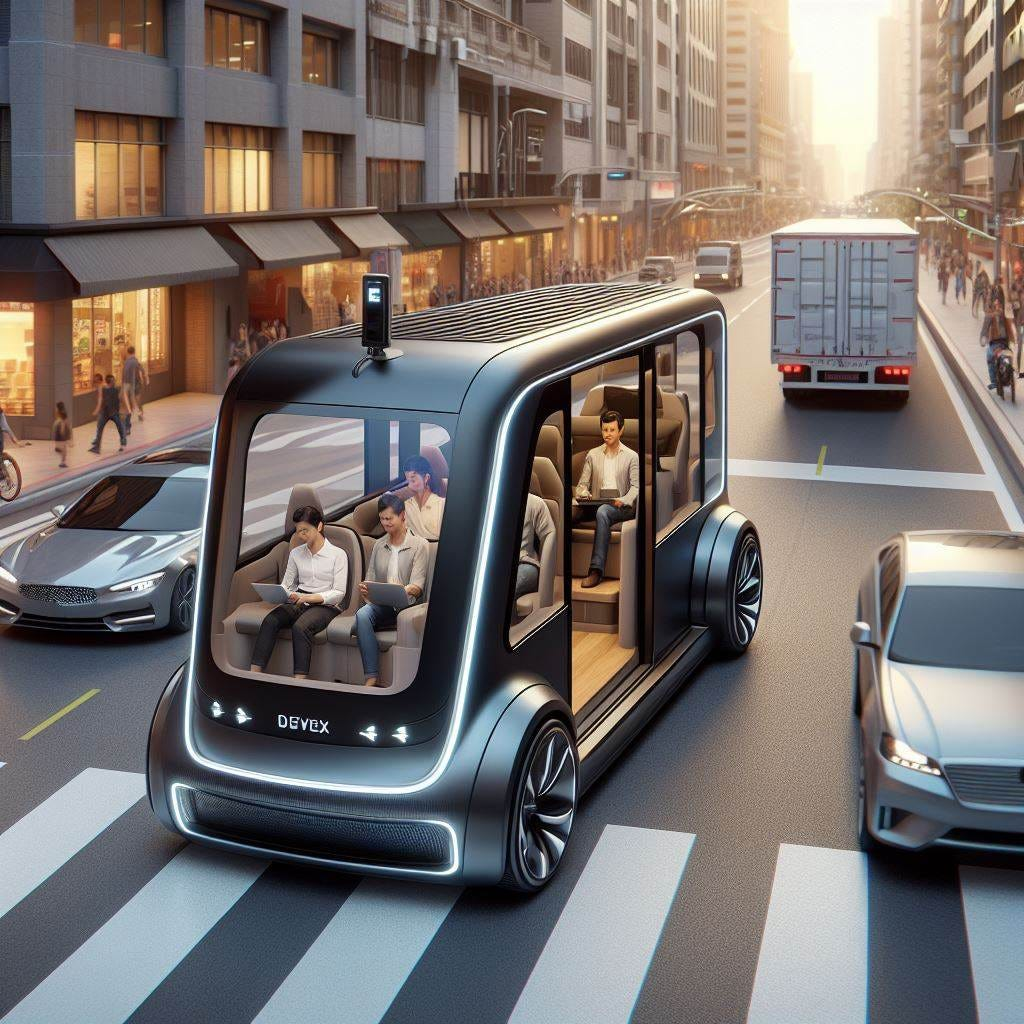The advent of self-driving cars heralds a transformative era for urban mobility, with potential implications spanning across transportation systems, city planning, environmental sustainability, and social dynamics. As autonomous vehicle (AV) technology advances, its integration into urban landscapes could redefine how cities function and how people move within them. This essay explores the multifaceted impact of self-driving cars on urban mobility, examining the potential benefits, challenges, and future trends.

1. Enhanced Traffic Efficiency and Reduced Congestion
1.1 Optimized Traffic Flow
Self-driving cars have the potential to significantly improve traffic flow by communicating with each other and traffic management systems. Unlike human drivers, AVs can precisely time their movements, maintain optimal speeds, and reduce stop-and-go traffic. This synchronized movement can alleviate congestion, especially in urban areas where traffic density is high.
1.2 Reduced Need for Traffic Signals
With a network of self-driving cars that can communicate with each other, the need for traditional traffic signals and stop signs could diminish. AVs can negotiate intersections through cooperative behavior, reducing waiting times and improving traffic flow efficiency. This transition could lead to smoother and faster commutes.
2. Improved Safety and Reduced Accidents
2.1 Elimination of Human Error
Human error is a leading cause of traffic accidents. Self-driving cars, equipped with advanced sensors, cameras, and artificial intelligence, can detect and respond to hazards more quickly and accurately than human drivers. This could drastically reduce the number of accidents and fatalities on urban roads.
2.2 Enhanced Pedestrian Safety
AVs are designed to adhere strictly to traffic laws and can be programmed to prioritize pedestrian safety. By recognizing pedestrians and other vulnerable road users, self-driving cars can prevent accidents at crosswalks and in busy urban areas. Enhanced safety features, such as pedestrian detection and automatic braking, further contribute to safer urban environments.

3. Environmental Benefits
3.1 Reduced Emissions
Self-driving cars, particularly those that are electric, can contribute to a reduction in greenhouse gas emissions. AVs can optimize driving patterns to minimize energy consumption and emissions, such as by avoiding unnecessary idling and efficiently managing speed. The widespread adoption of electric AVs could significantly decrease the carbon footprint of urban transportation.
3.2 Efficient Ride-Sharing
AV technology could facilitate more efficient ride-sharing services, reducing the number of vehicles on the road. Shared autonomous vehicles (SAVs) can provide on-demand transportation, decreasing the need for personal car ownership. This could lead to fewer cars, reduced traffic congestion, and lower emissions in urban areas.
4. Urban Planning and Infrastructure
4.1 Reimagining Urban Space
The integration of self-driving cars into urban environments could lead to a reimagining of urban space. With fewer cars on the road and reduced need for parking, cities can repurpose land for green spaces, pedestrian zones, and other community-oriented developments. This transformation can enhance the quality of life for urban residents.
4.2 Infrastructure Adaptations
The widespread adoption of AVs will require significant adaptations in urban infrastructure. This includes the development of smart roads equipped with sensors and communication systems to support autonomous driving. Additionally, charging stations for electric AVs and designated drop-off and pick-up zones for ride-sharing services will need to be incorporated into urban planning.
5. Economic and Social Implications
5.1 Economic Opportunities
The rise of self-driving cars presents new economic opportunities, from the development and manufacturing of AV technology to the creation of new service industries. Job opportunities may arise in sectors such as software development, data analysis, and maintenance of AV fleets. However, there could also be disruptions in industries like traditional taxi services and trucking.
5.2 Social Equity
The deployment of AVs has the potential to improve social equity in urban mobility. Autonomous ride-sharing services can provide affordable and accessible transportation options for underserved communities, including the elderly and disabled. By reducing transportation barriers, AVs can enhance mobility and access to essential services for all urban residents.
6. Privacy and Ethical Considerations
6.1 Data Privacy
The operation of self-driving cars relies on the collection and analysis of vast amounts of data. This raises concerns about data privacy and the potential misuse of personal information. Ensuring robust data protection measures and transparent data usage policies will be essential to address these concerns and build public trust.
6.2 Ethical Dilemmas
Self-driving cars also present ethical dilemmas, such as decision-making in unavoidable accident scenarios. Developing ethical frameworks and programming guidelines to navigate these situations will be crucial. Public discourse and regulatory oversight will play important roles in shaping the ethical landscape of AV technology.
7. Challenges and Barriers to Adoption
7.1 Technological Limitations
Despite significant advancements, self-driving technology still faces limitations in complex urban environments. Navigating through unpredictable human behavior, adverse weather conditions, and intricate traffic scenarios remains challenging. Continued research and development are necessary to enhance the reliability and safety of AVs.
7.2 Regulatory and Legal Hurdles
The widespread adoption of self-driving cars will require comprehensive regulatory frameworks that address safety standards, liability issues, and operational guidelines. Governments and policymakers must collaborate with industry stakeholders to develop regulations that ensure the safe and ethical deployment of AV technology.
7.3 Public Acceptance
Public acceptance of self-driving cars is another critical factor for their successful integration into urban mobility. Building trust in AV technology through transparent communication, rigorous testing, and demonstration of safety benefits will be essential to gain public confidence and acceptance.
8. Future Trends and Innovations

8.1 Integration with Public Transportation
The future of urban mobility may see greater integration between self-driving cars and public transportation systems. AVs can serve as first-mile and last-mile solutions, connecting commuters to public transit hubs and reducing the reliance on personal vehicles. This integrated approach can enhance the efficiency and accessibility of urban transportation networks.
8.2 Advancements in Connectivity
Advancements in connectivity, such as 5G networks, will enhance the capabilities of self-driving cars. Improved communication between vehicles, infrastructure, and traffic management systems will enable more efficient and coordinated urban mobility. This connected ecosystem will support the safe and seamless operation of AVs.
8.3 Autonomous Freight and Delivery
Beyond passenger transportation, self-driving technology is poised to revolutionize urban freight and delivery services. Autonomous delivery vehicles and drones can streamline logistics, reduce delivery times, and alleviate traffic congestion caused by traditional delivery trucks. This innovation will be particularly beneficial for e-commerce and urban logistics.
Conclusion
Self-driving cars have the potential to reshape urban mobility in profound ways, offering benefits such as improved traffic efficiency, enhanced safety, environmental sustainability, and new economic opportunities. However, realizing these benefits will require overcoming significant challenges, including technological limitations, regulatory hurdles, and public acceptance. As AV technology continues to advance, its successful integration into urban environments will depend on collaborative efforts between governments, industry stakeholders, and the public. By addressing these challenges and embracing innovative solutions, cities can harness the transformative power of self-driving cars to create more efficient, sustainable, and inclusive urban mobility systems.
Stay tuned for more updates only on QAWire


